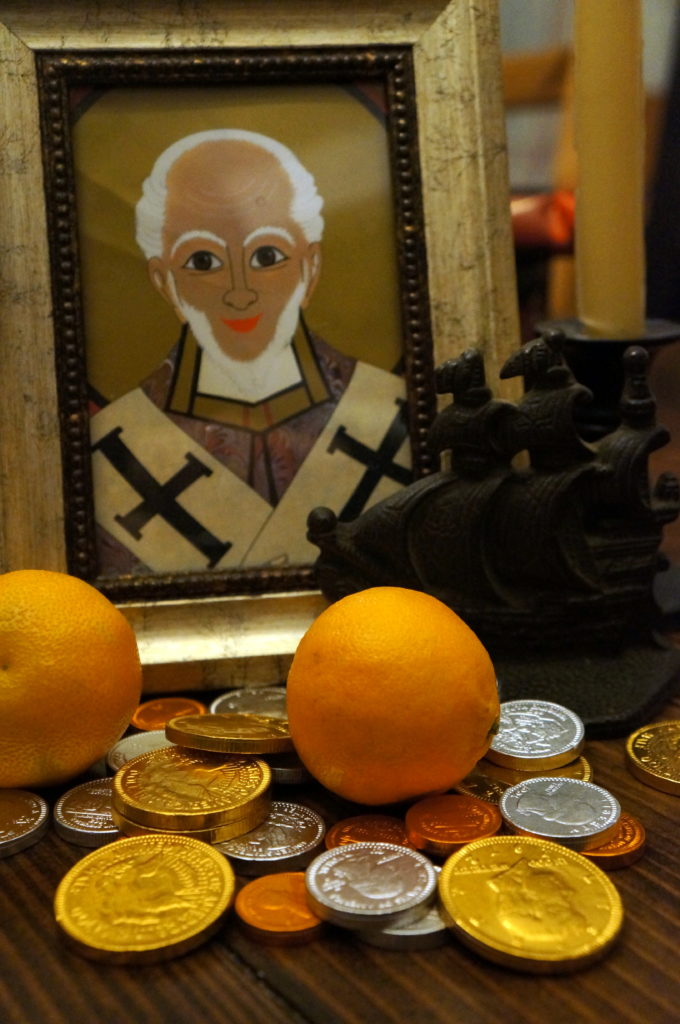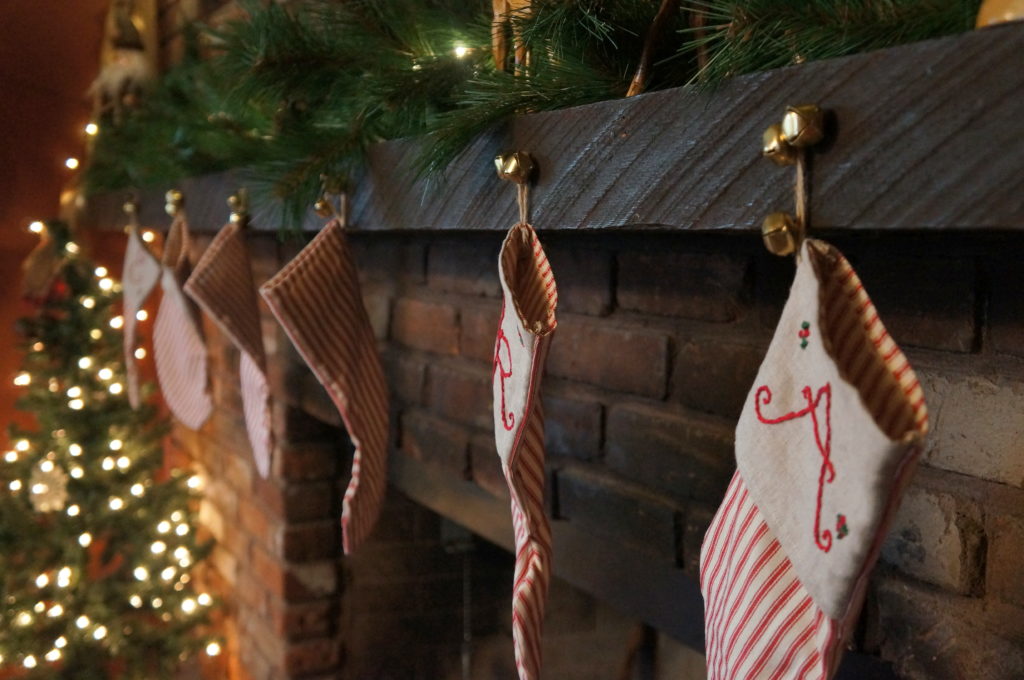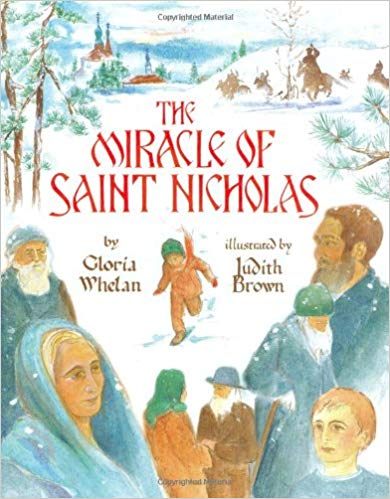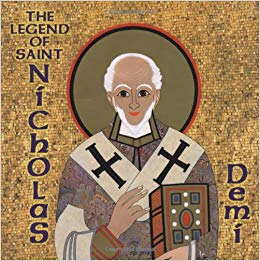feast day: December 6

I, like most kids, grew up with the Santa Claus myth. It’s a rite of passage in my family to have a photo with Santa while screaming in terror. I never really believed that Santa Claus came down the chimney and put presents under the tree, but I sure wanted to. My mom put “from Santa” on our presents for a long time, but I knew it was a gag. I loved fairytales, though, and to me Santa was a fairytale. Not real? No problem, neither are flying dragons or life-giving first kisses, so I could deal with the Santa myth and not feel like my childhood was falling out from beneath me. But my husband and I knew we didn’t want to push the Santa thing when we had kids. Especially once we knew the real story. I’m not saying it’s bad to do the Santa-thing, I think it’s totally a parental choice, but even if you do the Santa-thing, introducing kids to the real St. Nicholas is magical and {bonus} true.
Well, most of it’s true. Like a lot of saint stories, pieces of it have become myth and legend. But miracles can easily begin to sound mythical, so who’s to say St. Nicholas didn’t bring back to life three boys who had been boiled for stew by an evil cannibal? Or bi-located and saved sailors from shipwreck? It could happen.

We know for sure that St. Nicholas was the Bishop of Myra in the 3rd/4th centuries, and because of the many miracles attributed to him even during his lifetime, is often called St. Nicholas the Wonder-worker. He was (effectively) Greek and claims a large number of devotees in the eastern church. I didn’t hear about him until I was Catholic, and though I don’t remember specific families or conversations, somehow I gradually learned about the various traditions surrounding his feast day. The first year we celebrated St. Nick day, our two oldest daughters who were then younger than three, left their shoes outside their door and we put little chocolates in them. The next year, I bought them shoes and put gifts in those, then eventually we arrived at an official Family Tradition: we open stockings in the morning of St. Nick’s day, then have a Greek dinner.
These are stockings I made just for St. Nick’s Day out of red ticking and linen, and– this is important– they are small so they look happily full without my having to break the bank on gifts. But you could easily buy simple, cheap red fake-velvet stockings and accomplish the same thing.

What goes in the stockings?
- Chocolate coins and/or real coins BECAUSE St. Nicholas is said to have saved three village girls from bad marriages by providing dowries for them (thereby making them more eligible for better men), and as he did not want to be found out, snuck into their homes (possibly through the chimney?) and dropped the coins into their stockings which were hanging by the hearth to dry. I’m aware there might be some artistic license in the details of this story, but we do know that this act of generosity did happen (how it all happened, well…)
- a candy-cane BECAUSE candy-canes are bishop staffs, or a shepherd’s staff, and the red and white colors are very symbolic in Church tradition (and they’re delicious)
- Clementines BECAUSE these used to be a traditional gift at Christmas since exotic fruits were a delicacy in northern Europe for, well, most of time
- a toothbrush BECAUSE just because
- sometimes a small trinkety gift if I can fit it in, like chapstick or bookmarks…
For the feasting, which is very important since Advent is technically a time of penance and feasts are a nice breather, I make Greek roast, Greek potatoes (which is basically olive oil, salt, and lemon), and some kind of vegetable. For dessert, The Best Part, we vary it up. Some years we make Russian tea cakes, or Chocolate-Peppermint cake, and I think this year I’ll try iced Gingerbread.
St. Nicholas is the patron saint of children, which I’m sure is one way the whole Santa Claus myth began. Ultimately, the story of Santa Claus giving out gifts to over-toyed children came from the story of a real person whose love for Jesus Christ led him to love, serve, protect and heal the poor and helpless. Some year I’d like to make that a part of our feast, too.
postscript
PThese two books about St. Nicholas are absolute treasures:
- The Miracle of St. Nicholas by Gloria Whelan and Judith Brown
- The Legend of St. Nicholas by Demi
Greek seasoning
Greek seasoning from Greece is the best, but this is a worthy substitute (and has been tested on real life Greeks).
- 2 tsp. garlic powder
- 2 tsp. dried basil
- 2 tsp. dried Greek oregano
- 1 tsp. ground cinnamon
- 1 tsp. ground black pepper
- 1 tsp. dried parsley
- 1 tsp. dried rosemary, minced
- 1 tsp. dried dill weed (I usually omit this)
- 1 tsp. dried marjoram
- 1 tsp. cornstarch
- 1/2 tsp. ground thyme
- 1/2 tsp. ground nutmeg


